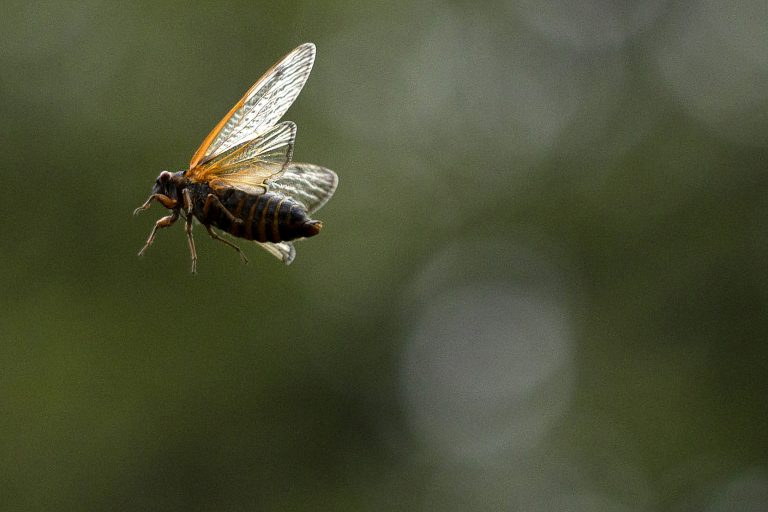In an event that occurs only once every 221 years, billions if not trillions of cicadas will emerge from underground in 17 eastern U.S. states this April, a rare natural phenomenon not seen since 1803.
Two species of the harmless yet noisy flying insect — broods XIX and XIII — are due to emerge at the same time, something that hasn’t occurred since Thomas Jefferson was president and will not occur again until the year 2244.
Cicadas are around two inches long. They have sturdy bodies, bulging red eyes, and translucent wings that span about three inches are not harmful to humans, pets, household gardens, or crops, the Environmental Protection Agency says. However, they can be very noisy.
The insects play an important role in the environment, providing a valuable food source for birds and mammals while also serving to aerate lawns while improving water filtration.
In addition, when they die, they add nutrients to the soil as they decompose.
Success
You are now signed up for our newsletter
Success
Check your email to complete sign up
Most species of cicada emerge every year; however these two species, broods XIX and XIII, only emerge every 13 or 17 years, respectively.
John Cooley, a cicada expert, recently told Live Science, “The co-emergence of any two broods of different cycles is rare, because the cycles are both prime numbers. Any given 13 and 17-year broods will only co-emerge once every 13 x 17 = 221 years.”
A cicada’s life cycle is very short and includes three stages, the egg, nymph and adult stages. It’s when they are adults that they lay eggs starting the cycle anew.
READ MORE:
- Chinese-American Artists Targeted in Planned NYT Piece That Would Misrepresent Falun Gong, Shen Yun Performing Arts
- Shen Yun Artists Face Discrimination from Pro-CCP Official at US Customs Upon Return From European Tour
- New Utah Law Takes Aim at Communist China’s Organ Harvesting Atrocities
Where to see them
The phenomenon will be exclusive to the eastern United States.
Brood XIII, which emerges on a 17-year cycle, will be able to be seen primarily in northern Illinois, eastern Iowa, southern Wisconsin, and in a few counties in northwestern Indiana, Floyd Shockley, an entomologist with the Smithsonian Institution’s National Museum of Natural History in Washington, told Fox News.
Brood XIX, which emerges once every 13 years, will be widely noticeable in Alabama, Arkansas, Georgia, Indiana, Illinois, Kentucky, Louisiana, Maryland, Missouri, Mississippi, North and South Carolina, Oklahoma, Tennessee, and Virginia, Shockley said.
The two broods are expected to only overlap a little in a small area in central Illinois and possibly in Indiana, where there is potential for them to interbreed.
The females of the species lay their eggs in small slits that they make in tree branches and can lay upwards of 400 to 600 eggs in their lifetime. The eggs hatch from late July to early August.
After hatching they immediately fall to the ground and burrow below the surface.
Cooley says that “this summer, some will get a chance to witness a phenomenon rarer — and probably louder — than Halley’s comet.”
“You cannot possibly be unaware that periodical cicadas are out, because they’re out by the millions and millions, and they’re noisy, charismatic, active insects that are just everywhere, “ he said.







